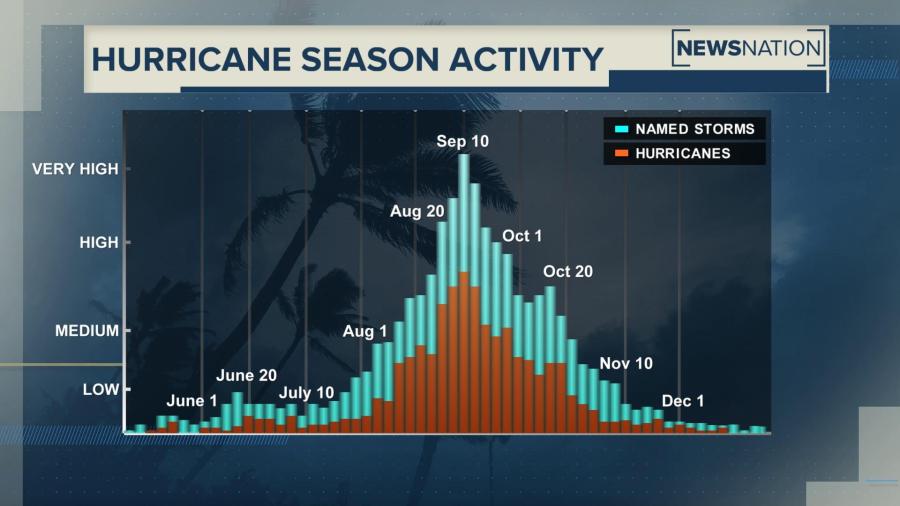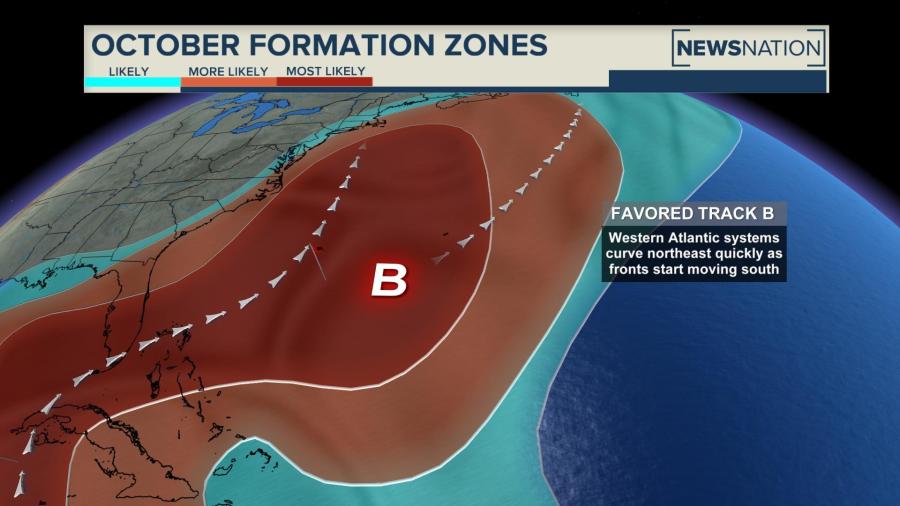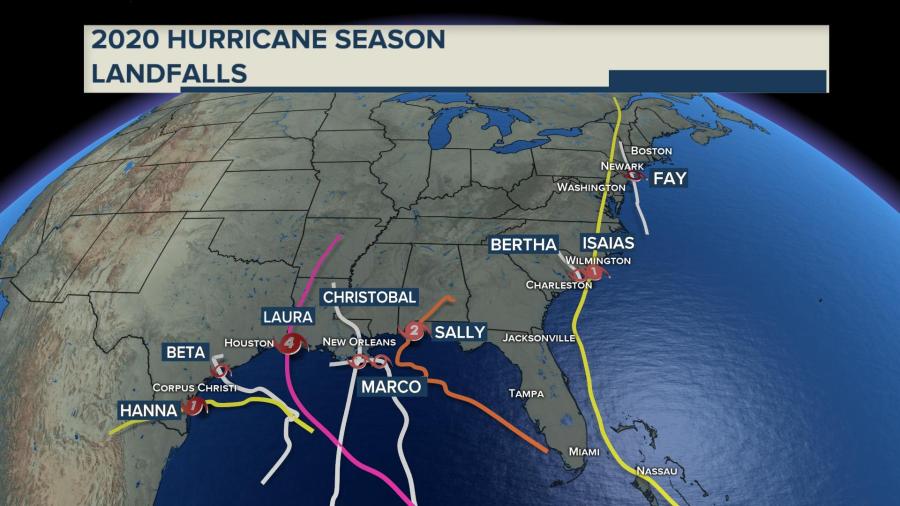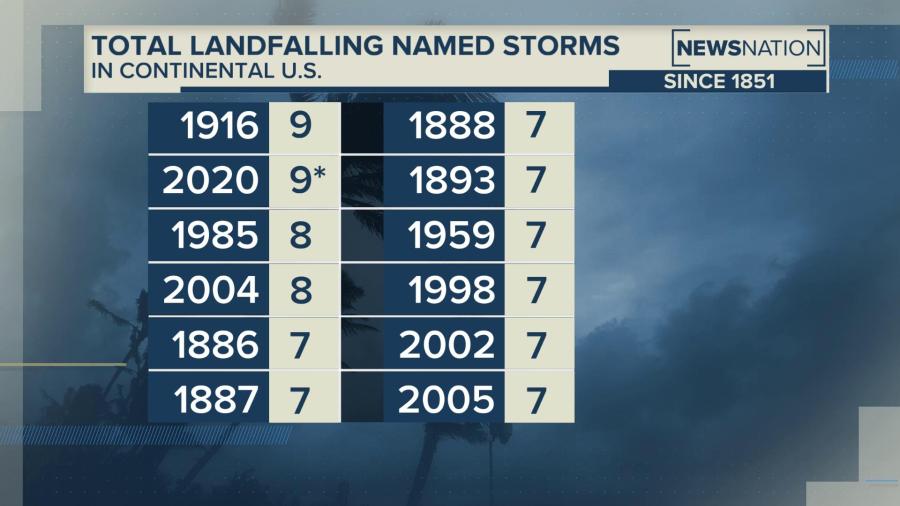(NewsNation Now) — It has been quiet in the tropics since the last week of September, but the season isn’t even close to being over. October has begun with a return to some tropical development and newly named systems may happen as soon as this weekend.
The 2020 hurricane season is still on pace to be a record breaker for most named storms in a season and is tied for first place with 1916 for the most landfalling named storms in the continental US at 9.

There are still two more months left in the official Hurricane season but storms can still occur outside of that window well into December. This was the case during the bumper crop ‘cane season of 2005 when two storms took place in December. One of them, tropical storm Zeta, became only the second storm on record to exist in two calendar years.

In a typical hurricane season, October sees on average 1-2 named storms with one of them becoming a hurricane. But this is about as far from a typical season as you can get as we blew through the list of storm names by September 18th and starting the backup Greek alphabet on the same day.
When averaging the most active hurricane seasons, the month of October saw 4-6 named storms with 1-2 becoming hurricanes.

The formation zones that are most likely to see development are in the north western Caribbean Sea between central America and Cuba, through Florida into western Atlantic. The typical storm tracks take most systems to the north and northeast across those zones. It goes without saying that there is no way to really know where storms will hit.


While Hurricane Sally brought flooding rains to the western Florida panhandle, the state has not had a legitimate landfalling named storm this year on its coastline. But there is still plenty of possibility for that to occur during this very active season.

Your NewsNation Weather team will continue to monitor this exceptional hurricane season closely bringing the latest updates on NewsNation every night from 7-10pm Central Time as well as on our social media platforms.
You can follow Chief Meteorologist Albert Ramone and myself on our Facebook and Twitter pages here:



